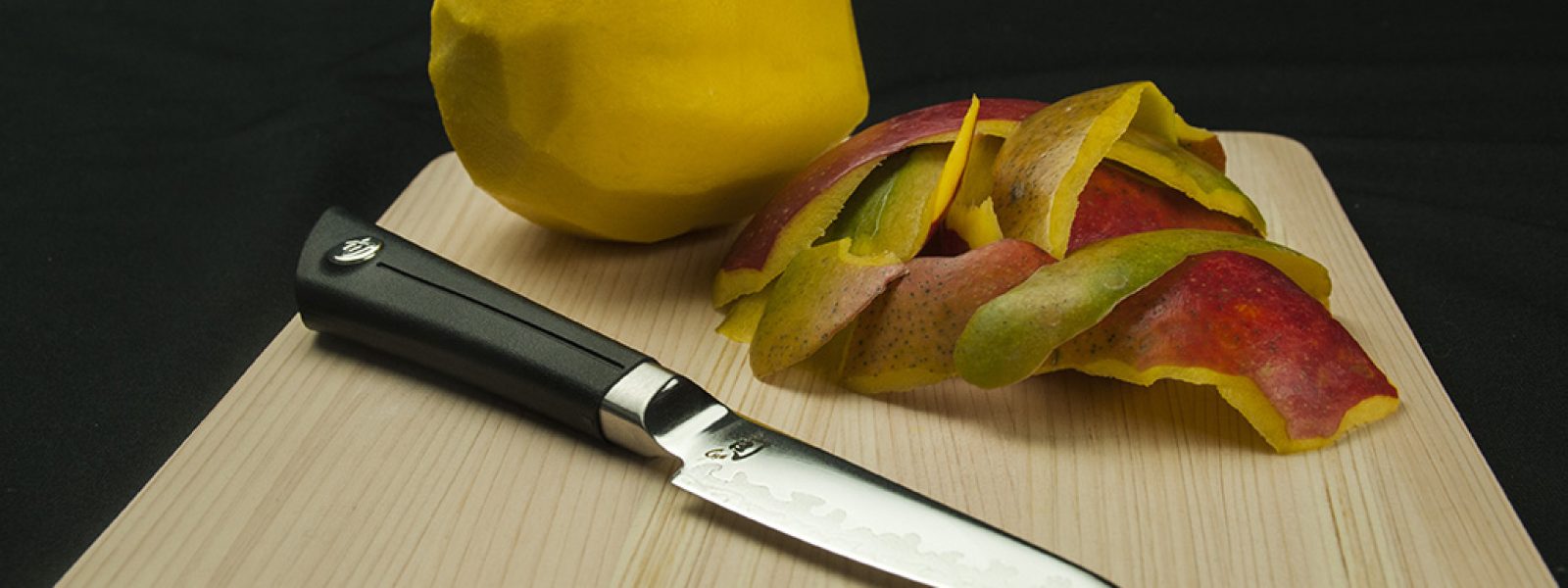Oops, I messed up my knife.
A few nice knives can elevate a home cook from good to great. However, investing in those items isn’t cheap– precisely why any dings, nicks or rust can be a real heartbreaker. Don’t fret, there are some easy ways to keep your knives in ship shape. Here are four common mishaps and how to fix them.
My Knife Doesn’t Hold Its Edge like it used to.
The more you love and use your knife, the more care it requires. When you sharpen your knife, the process removes material from the blade so the blade’s edge geometry becomes wider and your knife will require more frequent sharpening. That’s why I hone my blades on steel in between uses and only put a new ‘edge’ on when I absolutely need to. I can do that with my stone, but most often send it out to a pro. At just a few dollars a blade, it’s worth it.
There are a few things you can do to prolong your knife’s sharpness. Cut only on a “soft” wood board using proper technique. Never use a hard surface such as marble or glass; it’s a surefire way to damage your knife.
Proper cutting technique also helps maintain your knife’s edge. Use a smooth, slicing motion, never a forceful, up-and-down “chopping” manner. It’s not unlike cutting wood with a handsaw—forward and down, then back. The razor-sharp blade of your knife should make this practically effortless. When I appear to be ‘chopping’ up and down, I am really leaving the tip of the knife on the board and using a shorter swifter slicing motion on herbs or carrot dice etc. Banging your knife is what most people call chopping, don’t do it.
Oh rats! There’s a chip in my blade.
Those tiny chips or missing pieces in your knife’s cutting edge are called micro-corrosion. It’s the result of moisture left on the cutting edge—water, tomato guts, any kind of wetness left on the blade weakens the stainless steel and promotes chipping. To keep these pesky chips at bay, dry your knife immediately after use and/or washing.
The good news is those little chips can be sharpened out by a pro. Shun owners may return their Shun knives to their Tualatin, Oregon facility for free sharpening. There is probably a great knife sharpening service in your city—however, before you bring your knives anywhere, ask the chef at your favorite restaurant or a food obsessed friend for where they take theirs. Not all knife sharpeners are created equal! The local high-end kitchen supply store is a great resource, too.
My blade is rusty. WTF?
Stainless steel knives can still develop rust (yet one more reason to dry your blade immediately after washing). To remove rust from steel, try a natural abrasive like Bon Ami or cream of tartar. After removing the rust, wash your knife thoroughly with warm, soapy water, completely dry it with an absorbent material cloth or towel (did I mention you need to dry it completely? Dry your knife!). Finish with a light coating of cooking-grade oil on the blade and handle cap of the knife.
Yikes, I bent the tip of my knife!
Accidents happen. Maybe you used the tip of the knife to stab a watermelon? Or bent the tip while the knife is still stuck into the food you’re cutting (Hey, chicken I’m trying to quarter, I’m talking to you!). Maybe you used it as a prying tool or dropped it as a friend told you some shocking news. The point is, you knife tip is now bent. Or worse.
Sad news: your knife’s warranty isn’t going to do jack about your bent blade. Good news: your knife’s manufacturer or a good knife repair shop can attempt to reshape your blade. No promises, of course, and it’ll cost you some cash. But sometimes you gotta pay tuition for life’s lessons.

